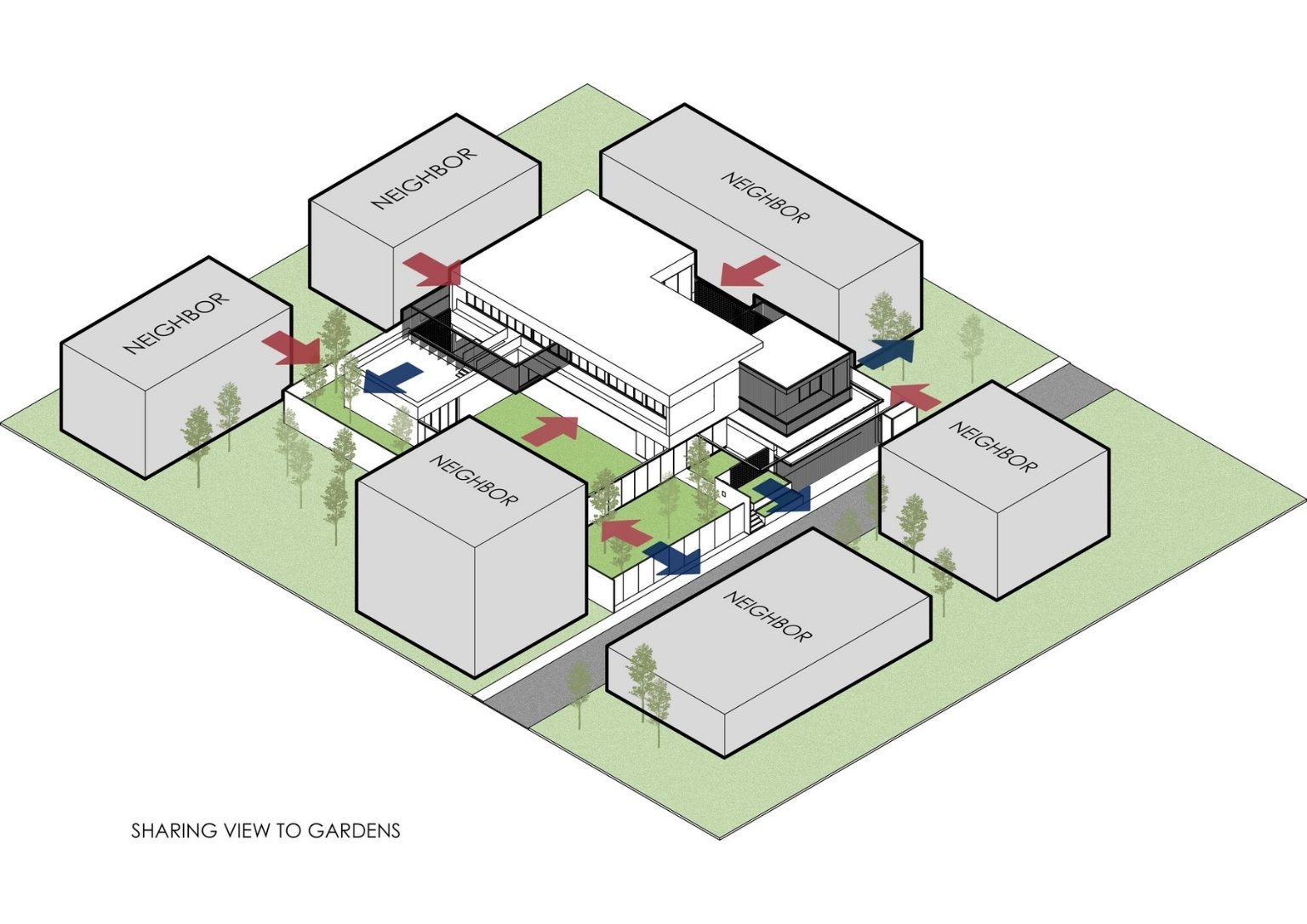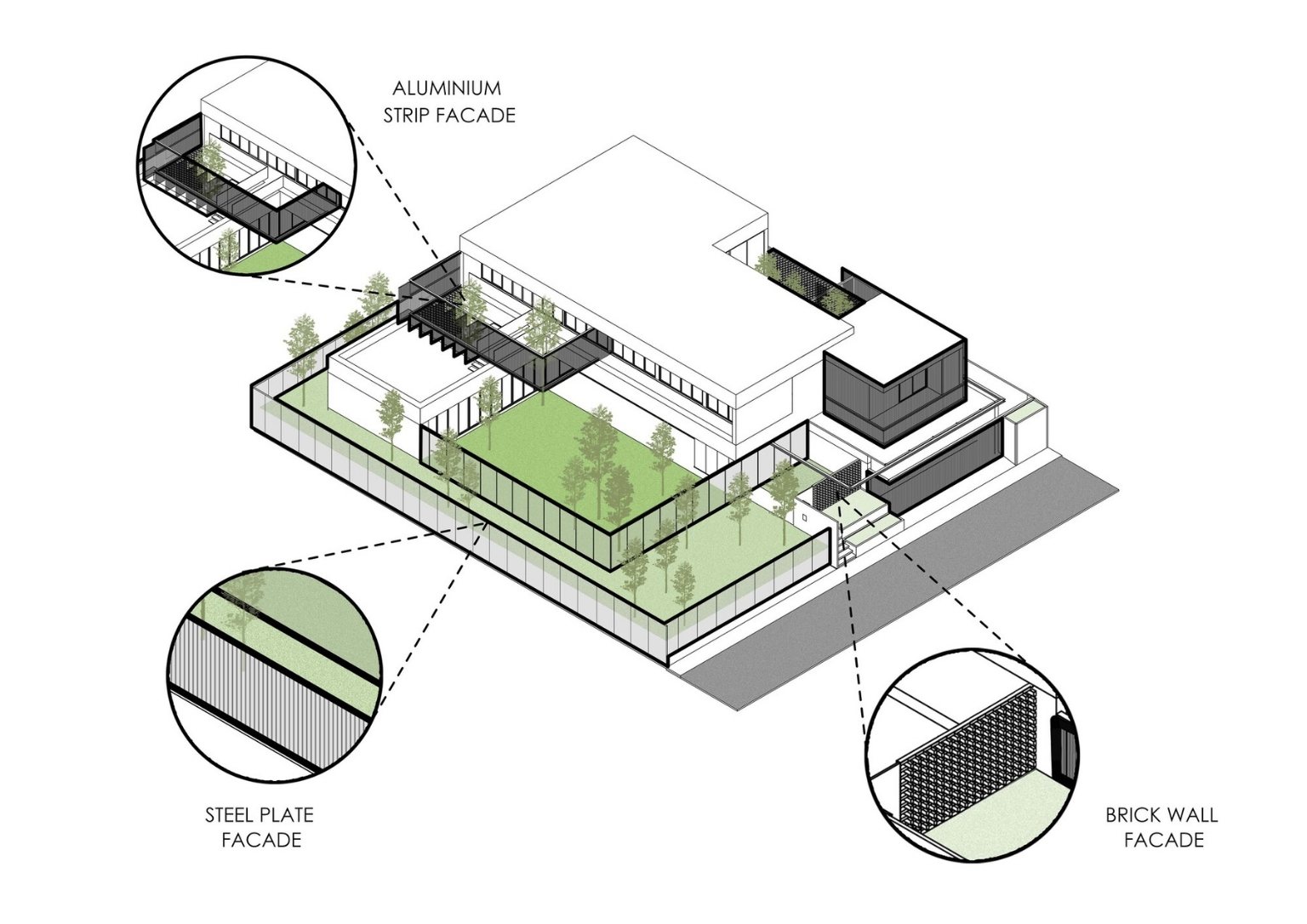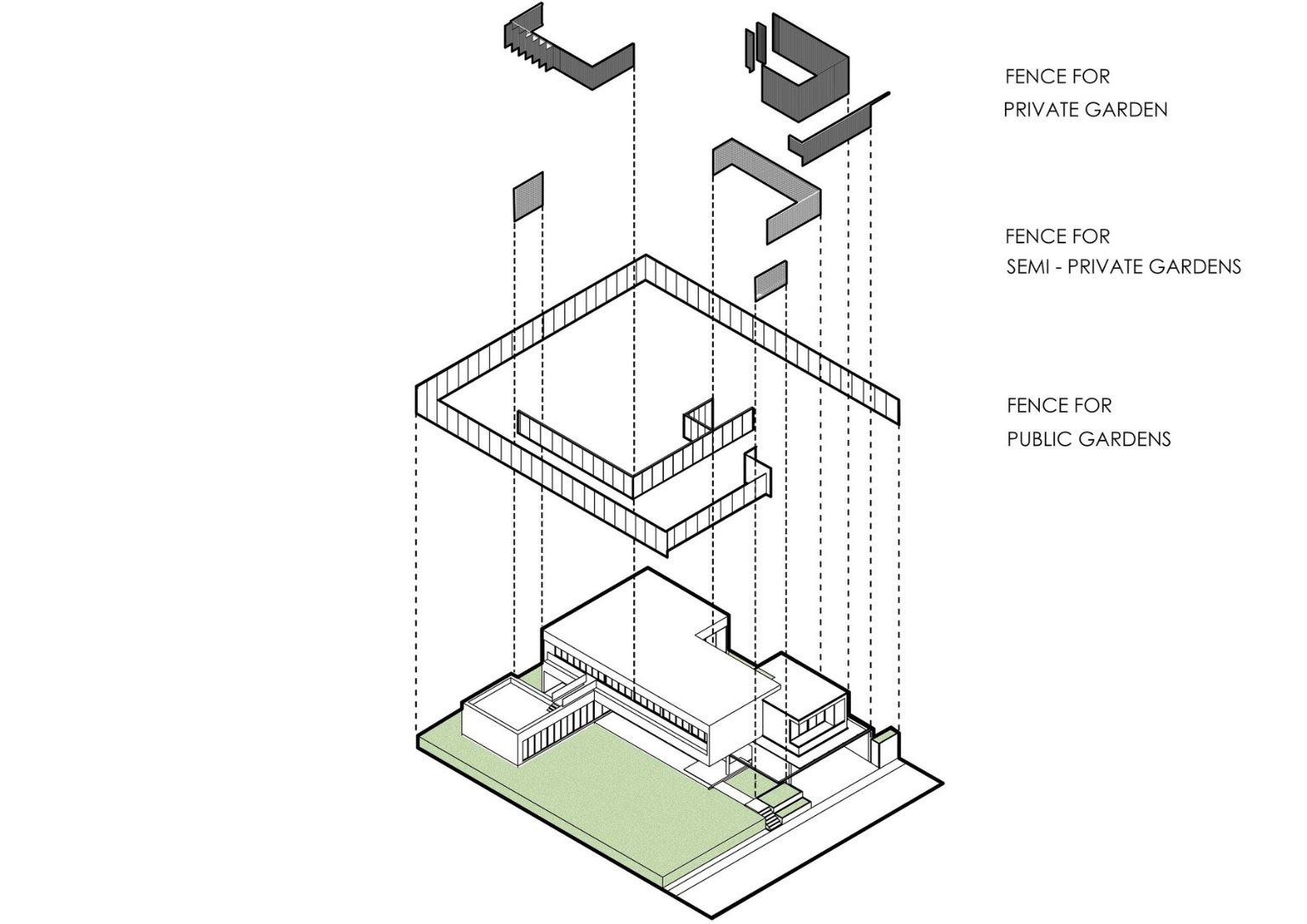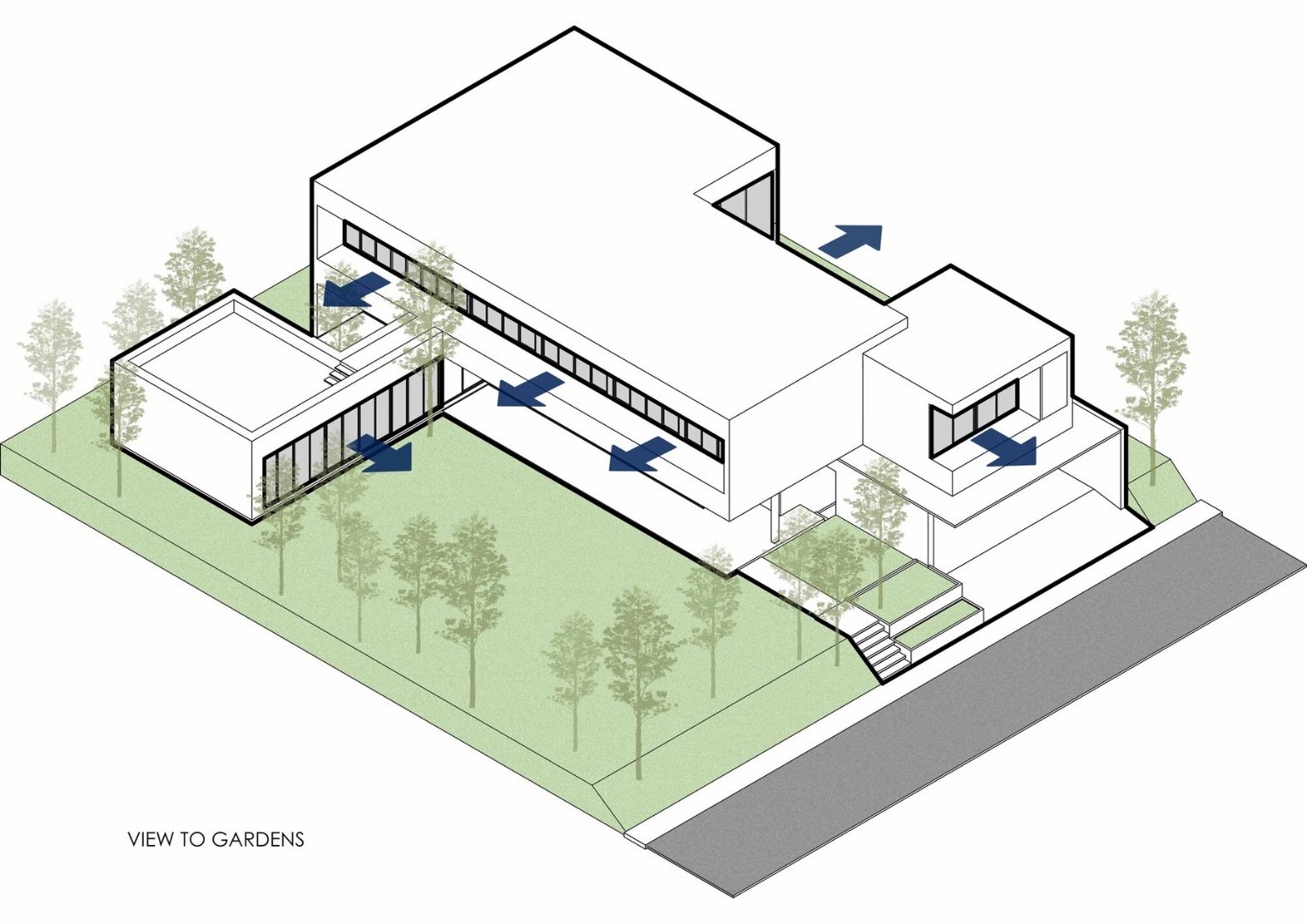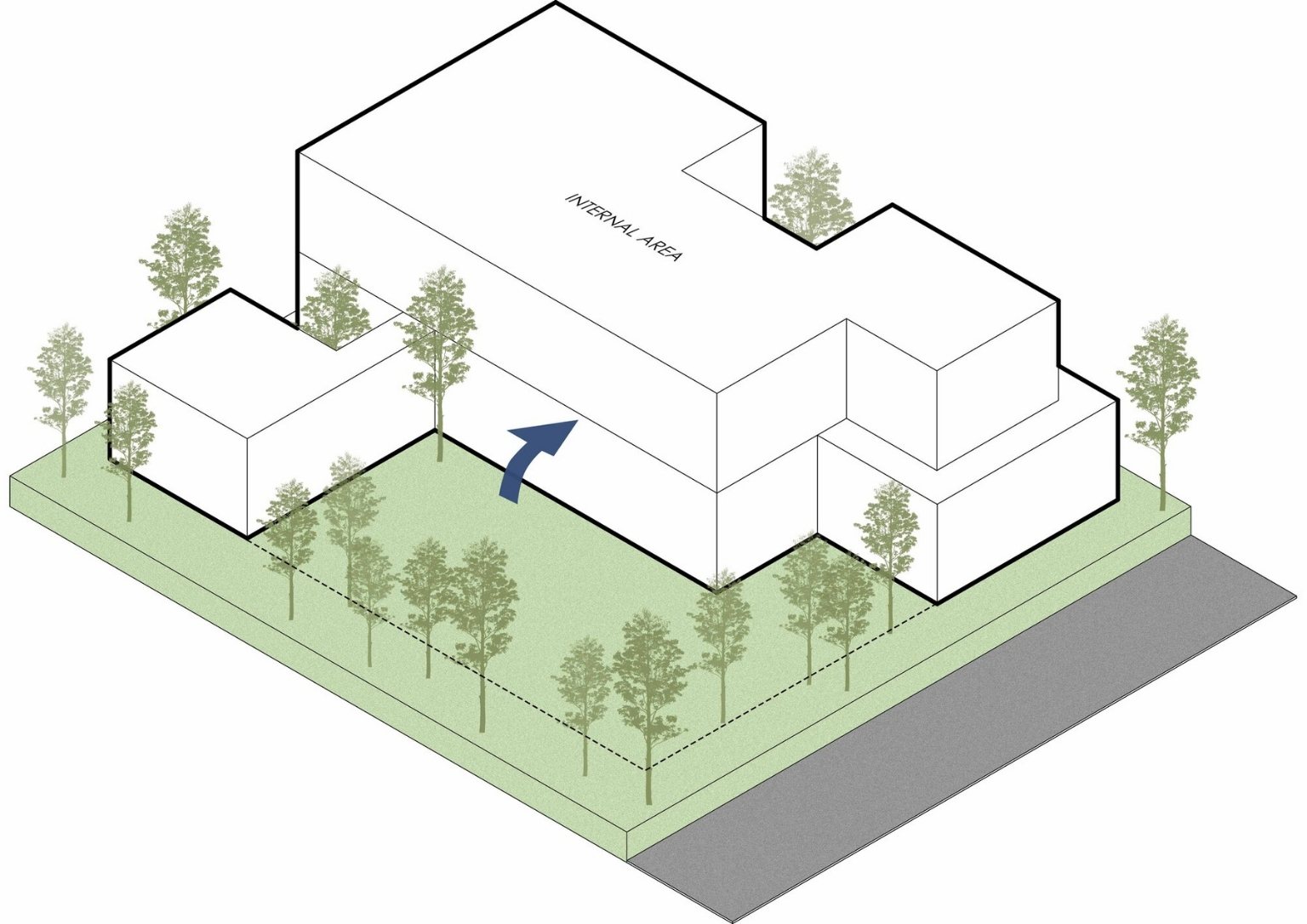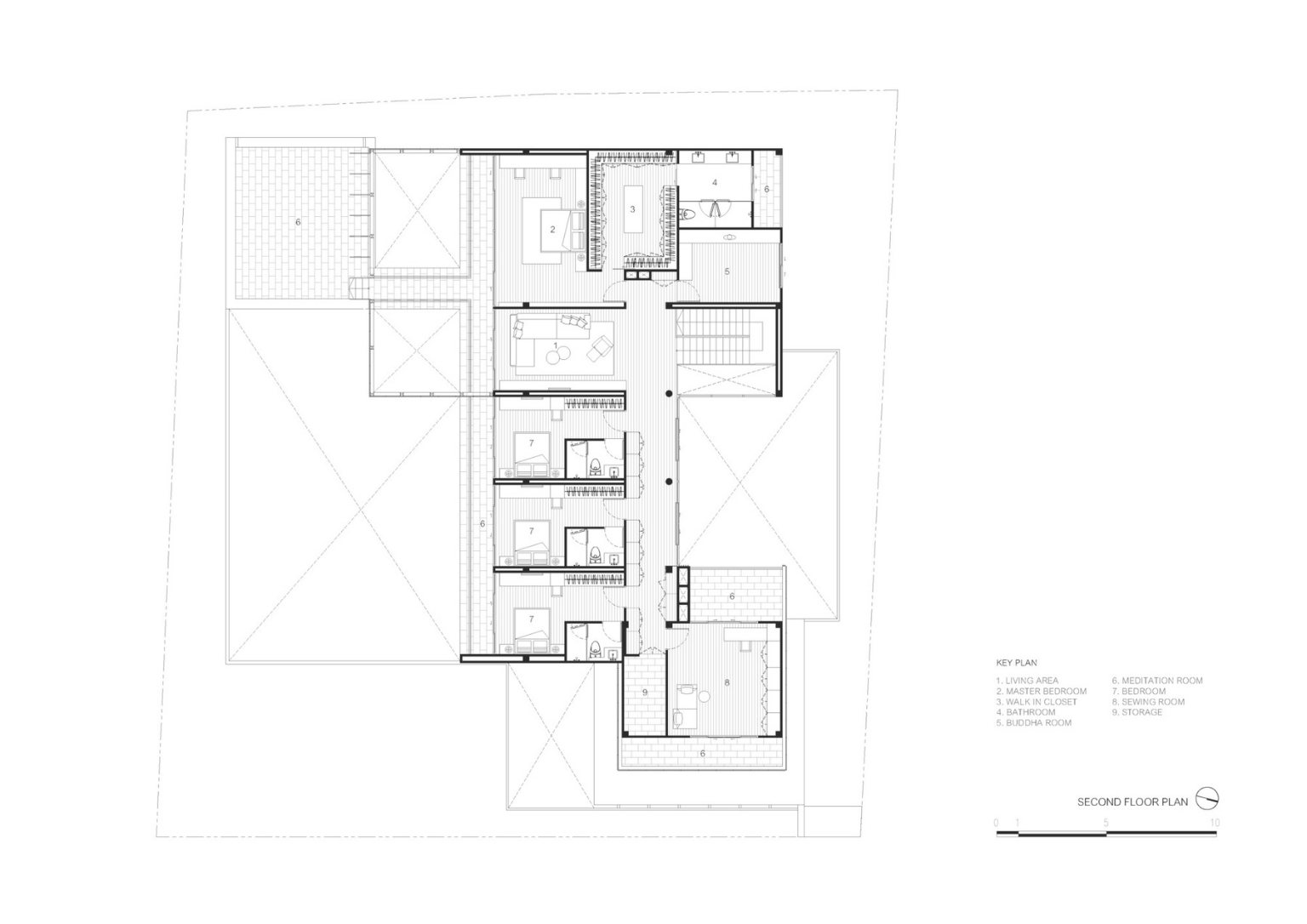
This Residential Building Effectively Veils The Interior To Maintain Privacy
Privacy of the occupants is one of the most important factors to consider when designing a residential building. The challenge for architects is to find the balance between being open and maintaining privacy. Ayutt and Associates Design’s recent project shows a beautiful yet subtle way to achieve this balance.
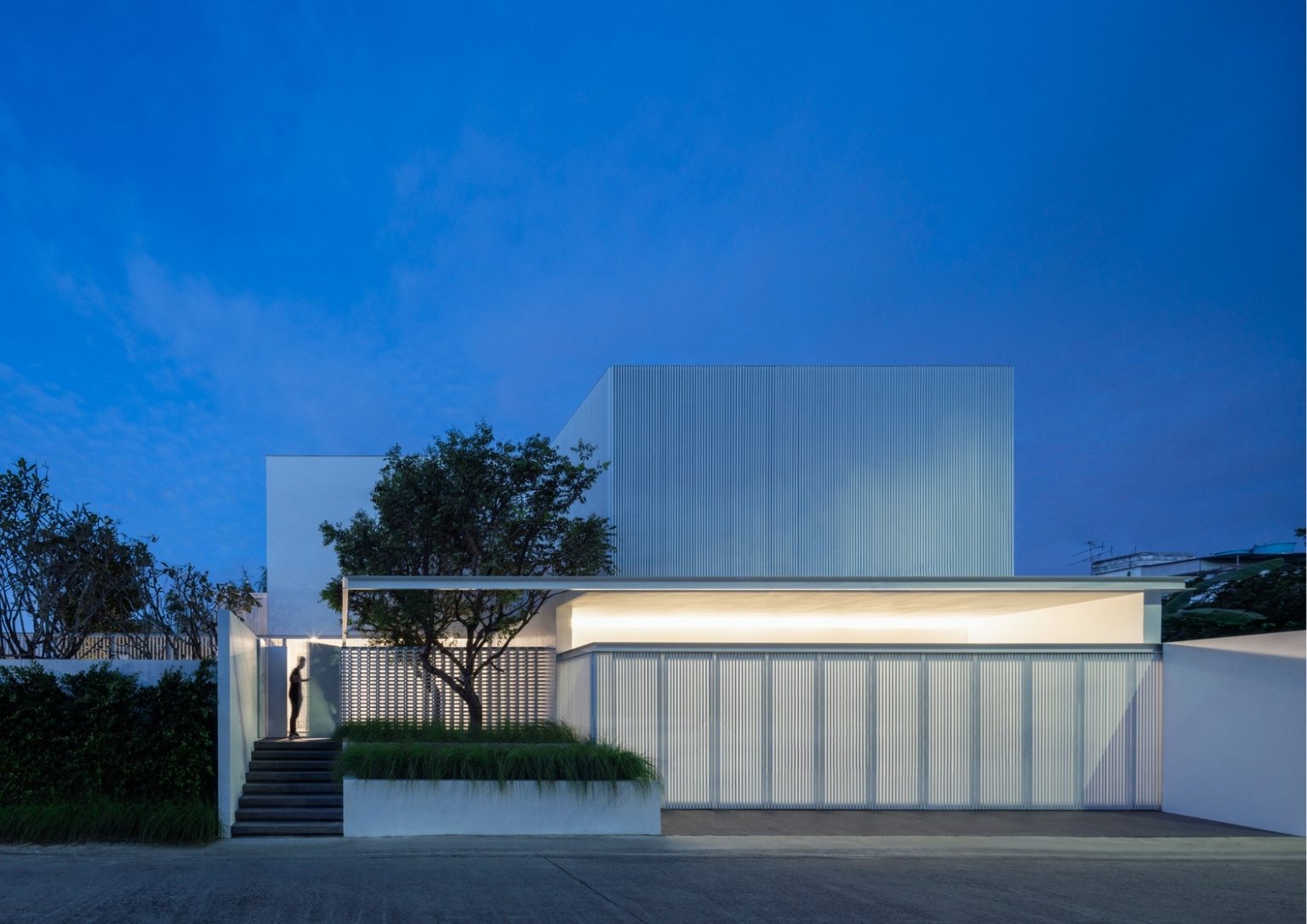
Veil House is a two-story residential structure in Thailand. The architect describes it as a house of modest plans with ambitious social implications. It follows a standard L-shaped plan which reveals layers of complexity upon closer inspection. The architect encapsulated the house with gardens instead of arranging it along the site’s perimeter around a central court and avoiding the surroundings. The gardens are not hidden away but are to be shared.
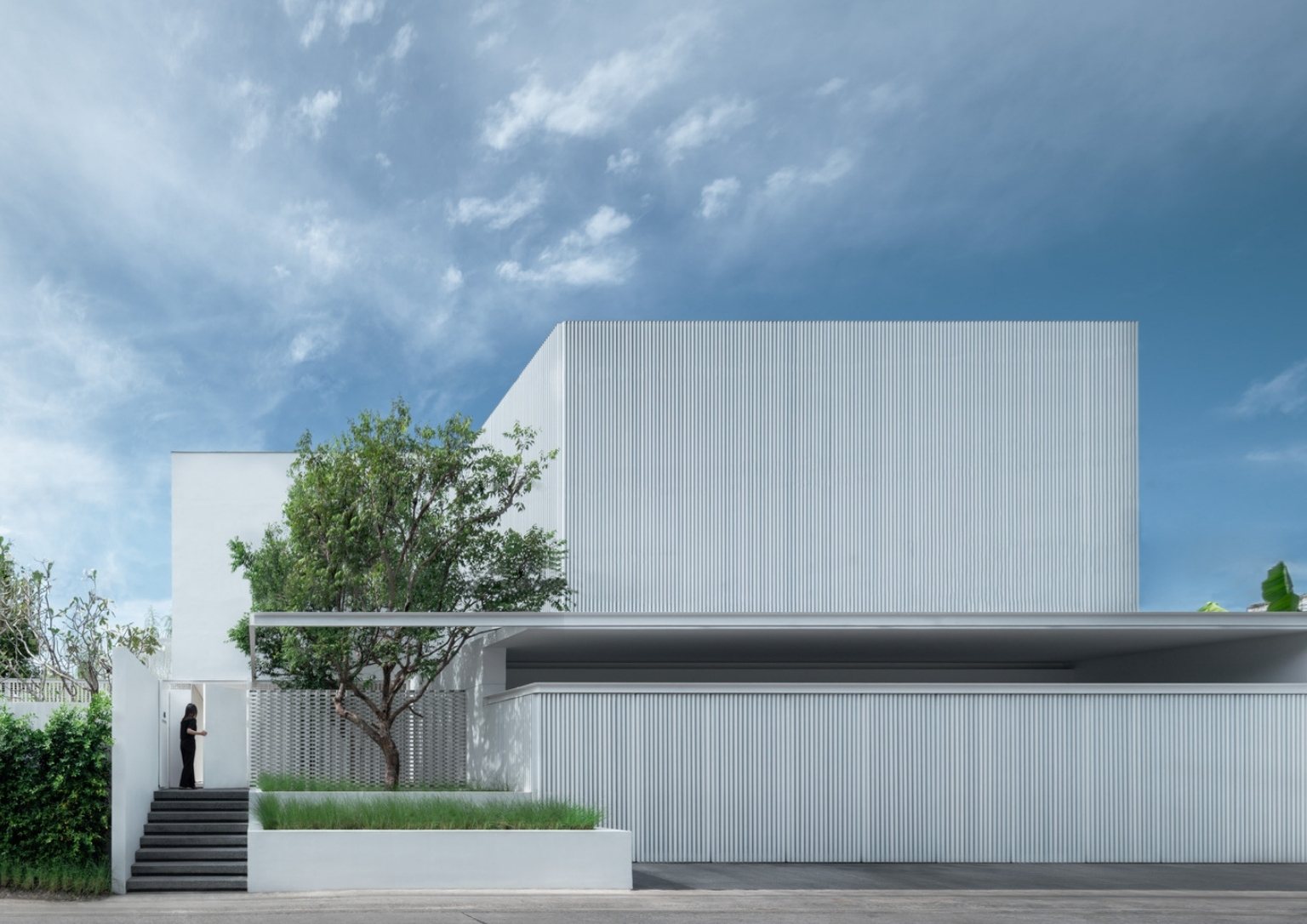
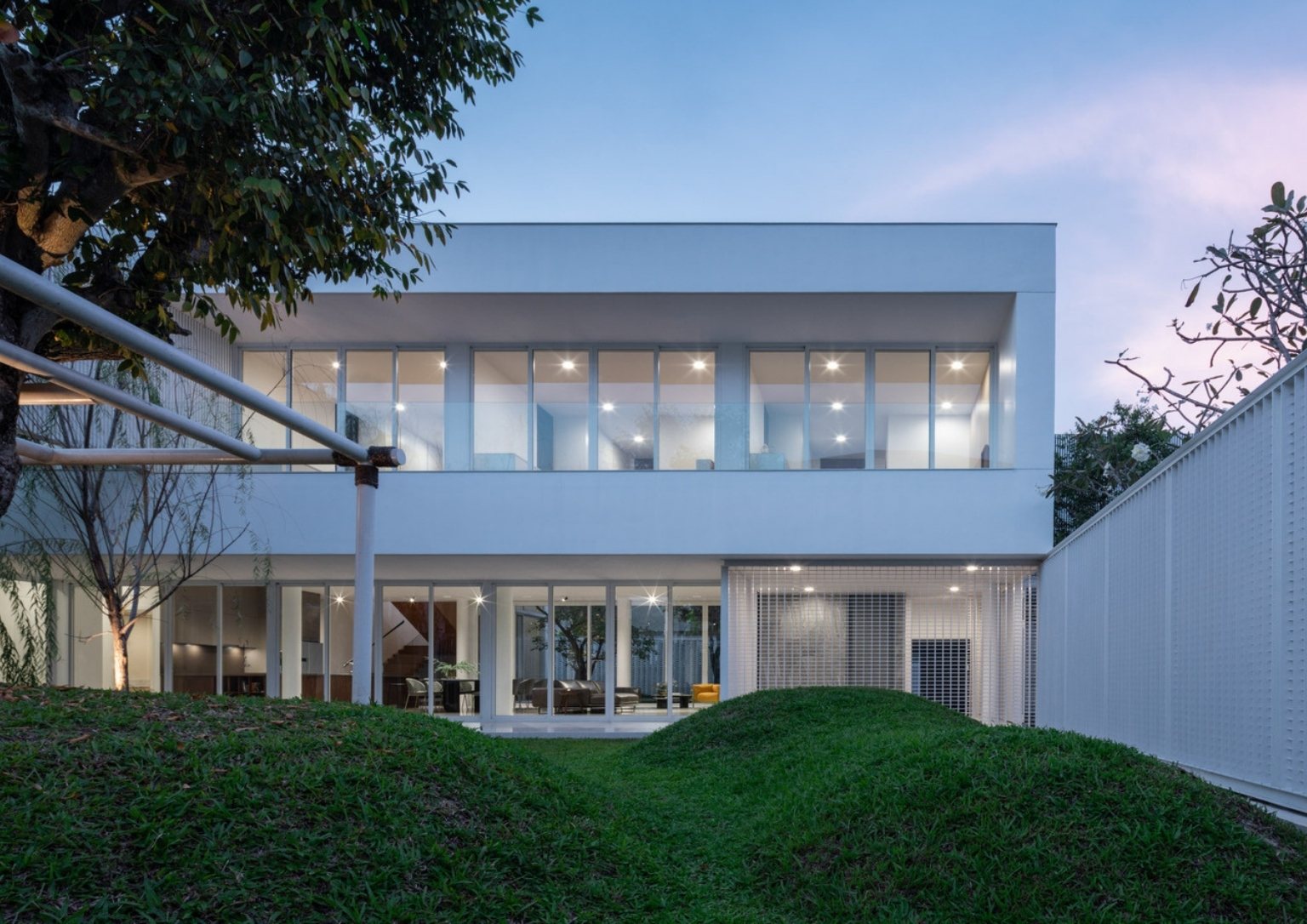
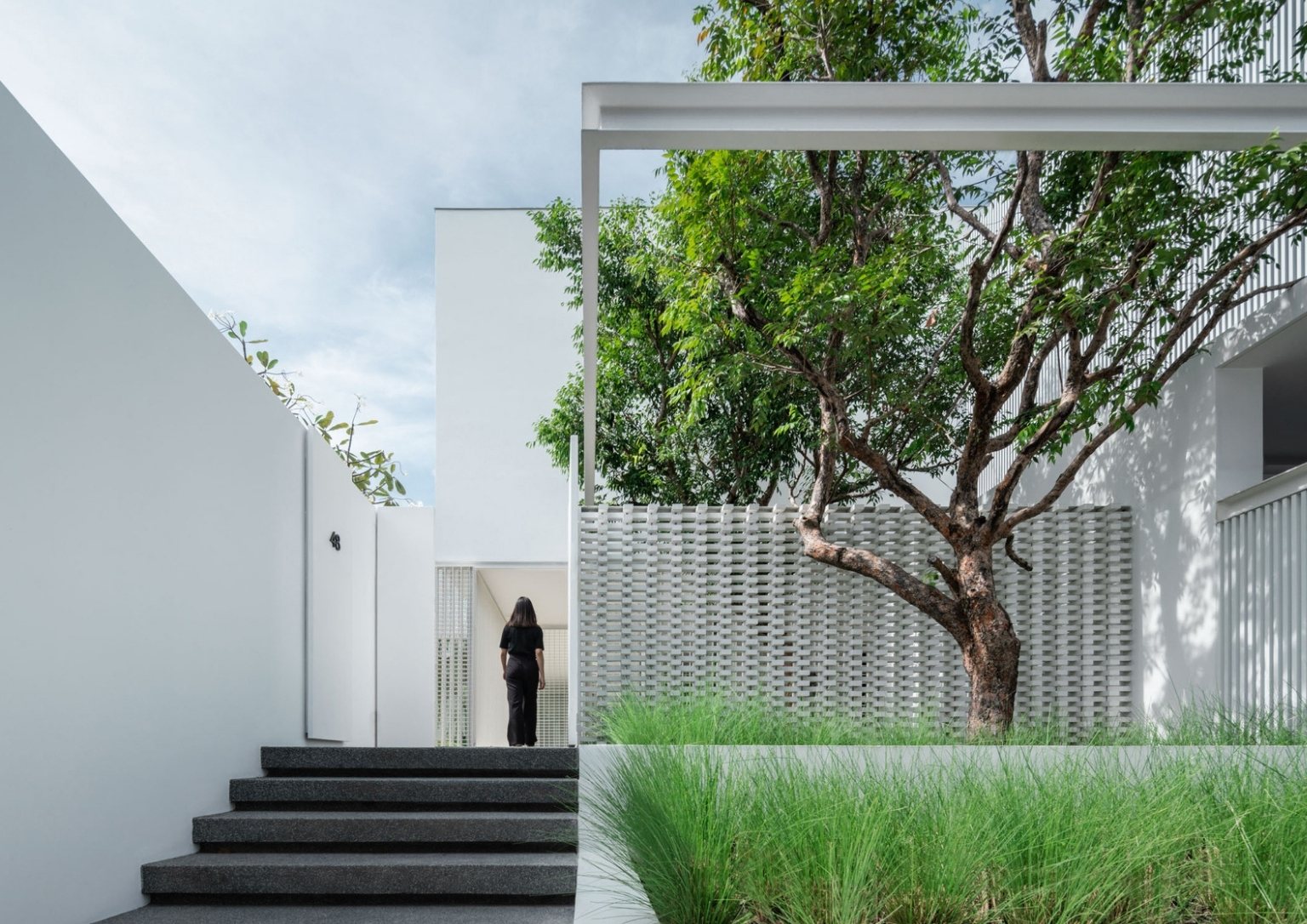
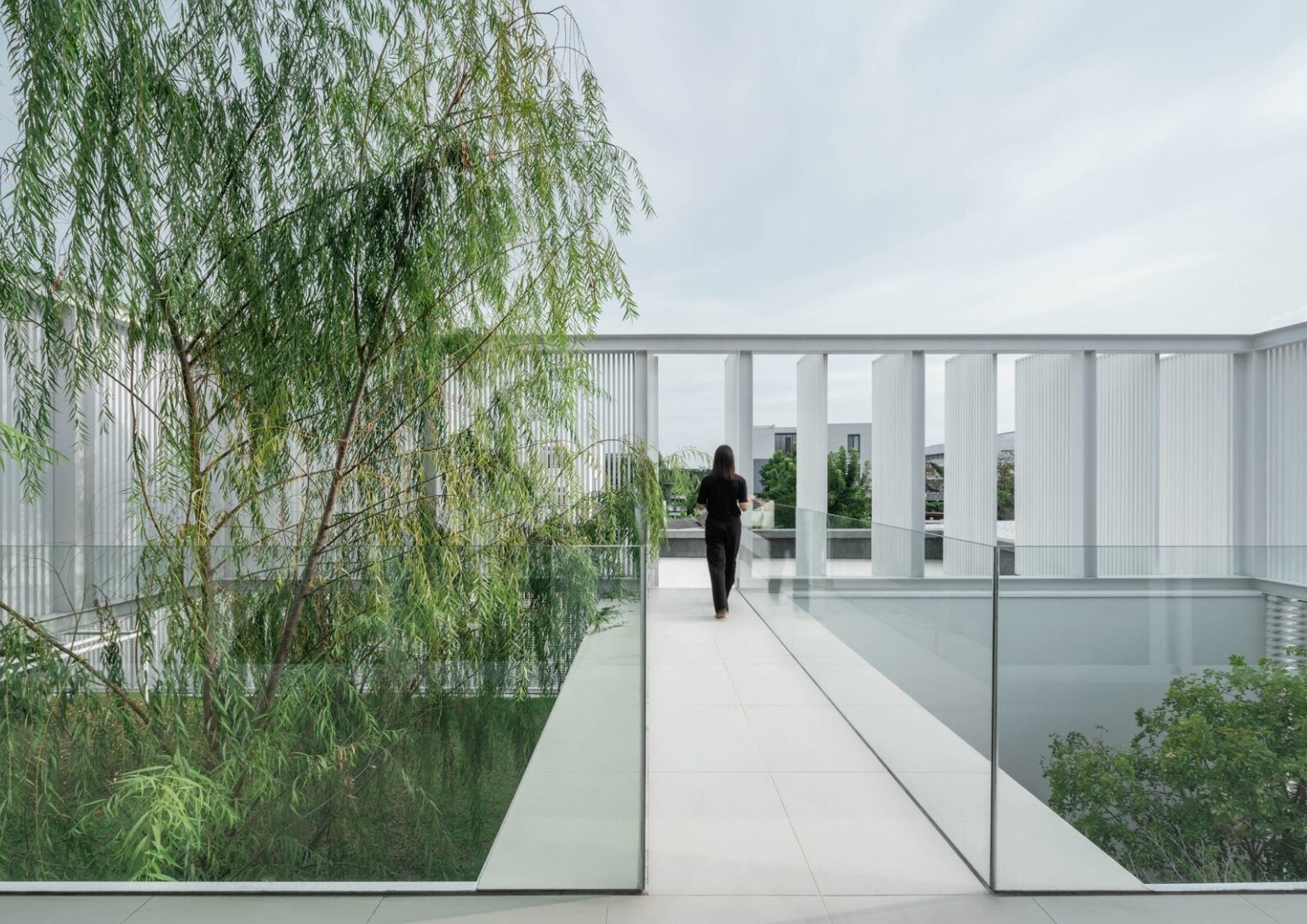
Ayutt and Associates Design explains preserving privacy while allowing this dialogue with the neighbors has been a challenge. This project is not intended to be unicentric which adds little value to the community. The house is meant to respond not only to one family but also to consider the surrounding families within the neighborhood.
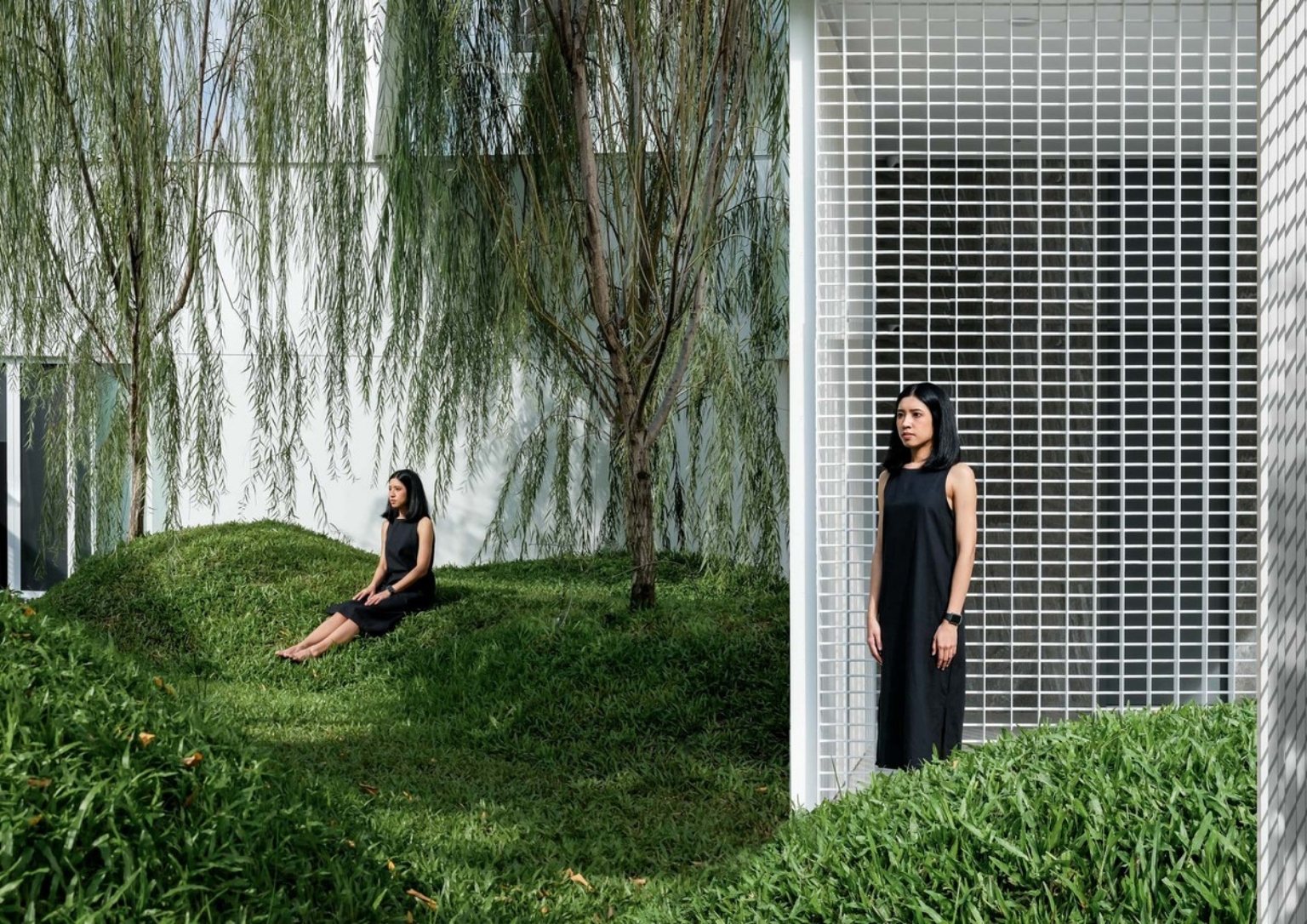
The architect has subdivided the greenspaces into courts, enclosed in facades and screens in different levels of pellucidity. “Like individual cloths, tailored to specific requirements, veiled over internal spaces, these specially laid walls and facades define exterior spaces where courts become “green rooms” interconnected with the interior volumes,” the architect explains.
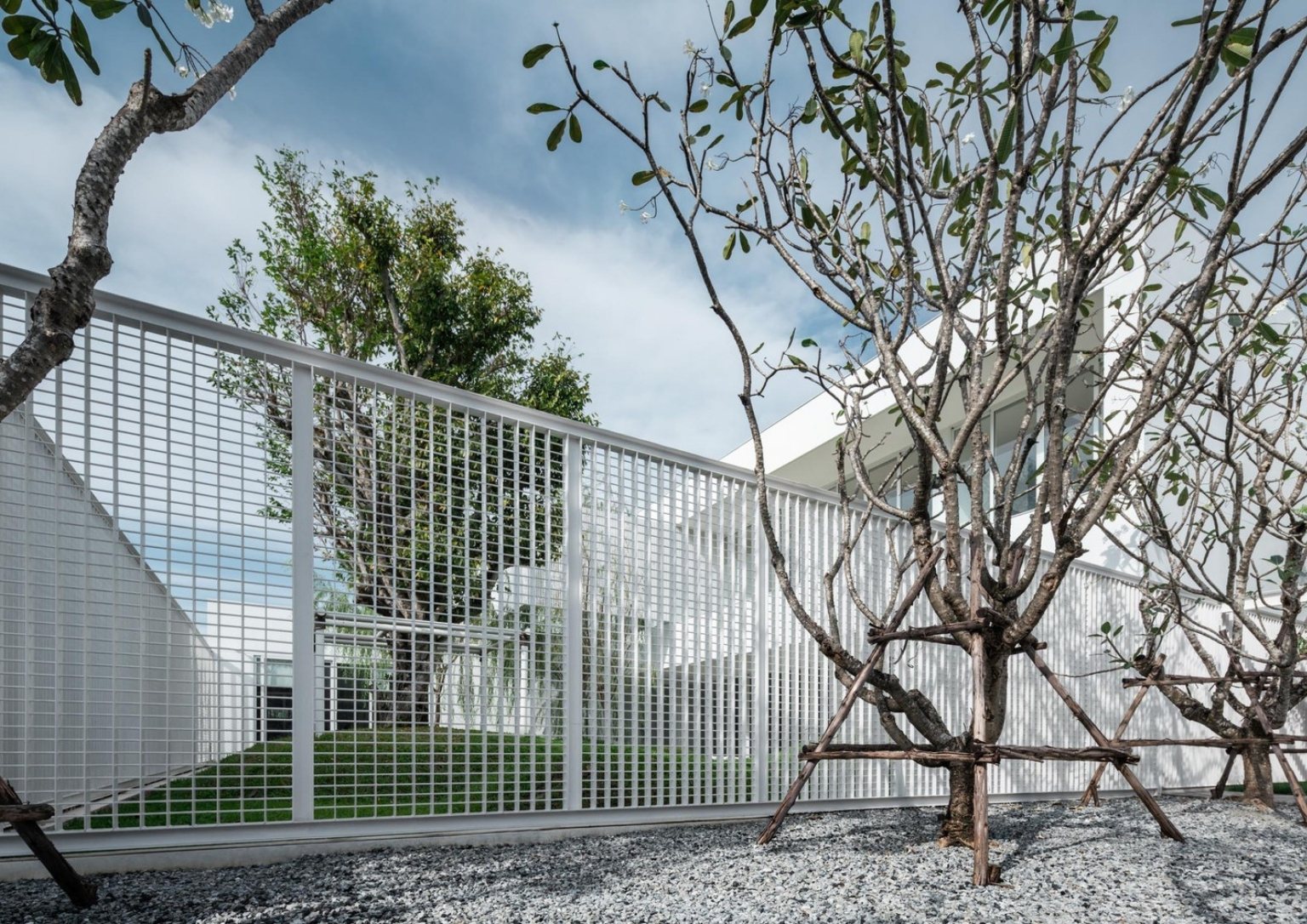
Each court is designed with unique characteristics, grouped into five segments, responding to varying intended use. First is the Public Garden, which is defined loosely by a cantilever beam gently suggesting the owner of the space while remaining accessible to the public. This element is a way to give back to the community by providing resting steps for people passing through during the day and street illumination during the evening.

The Semi-Public Gardens paved in gravel are accessible through the main gate. The grounds are designed to be trodden on and have been raised so that people in the garden could look over the parapet to interact with those on the road and neighbors across.
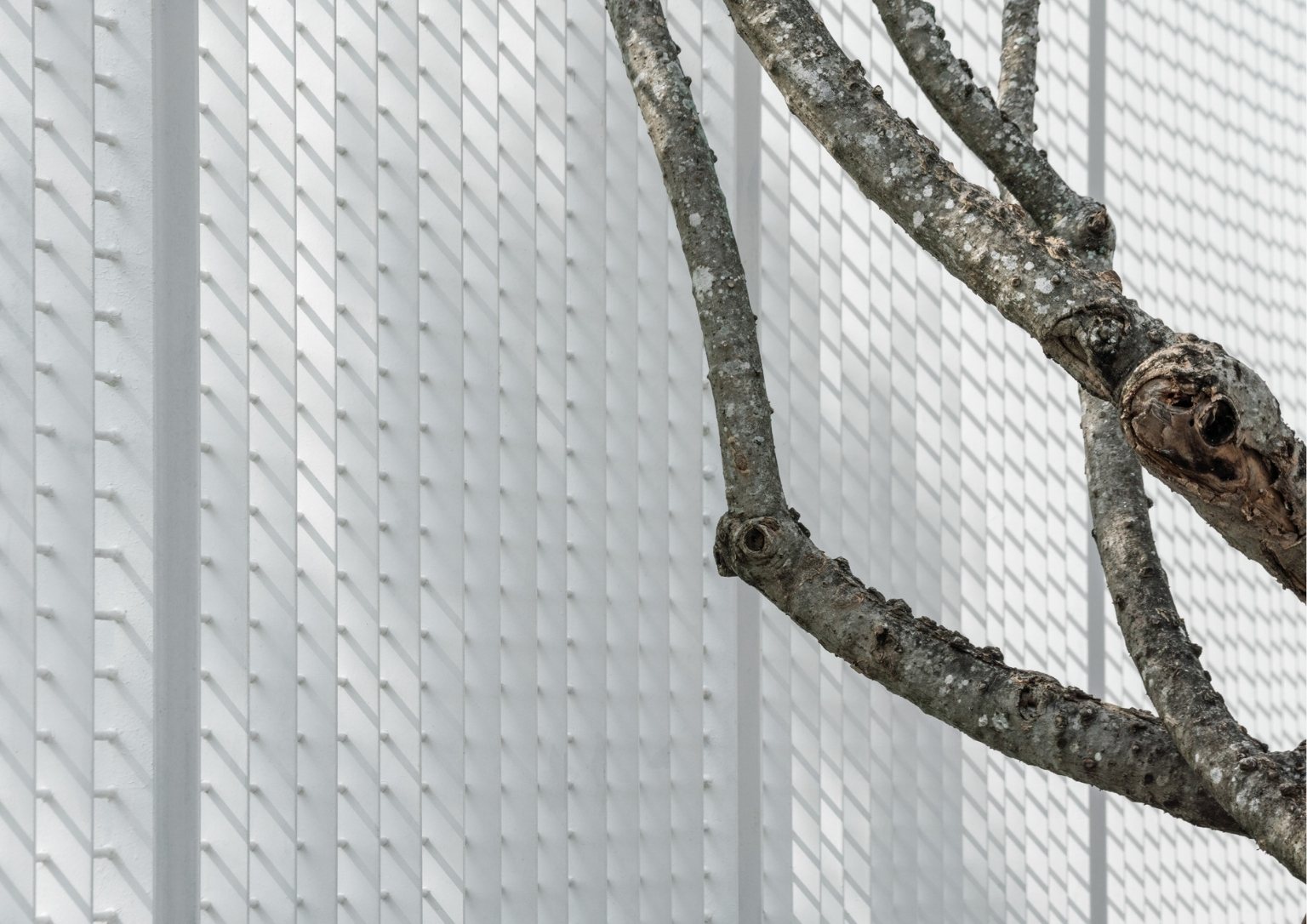
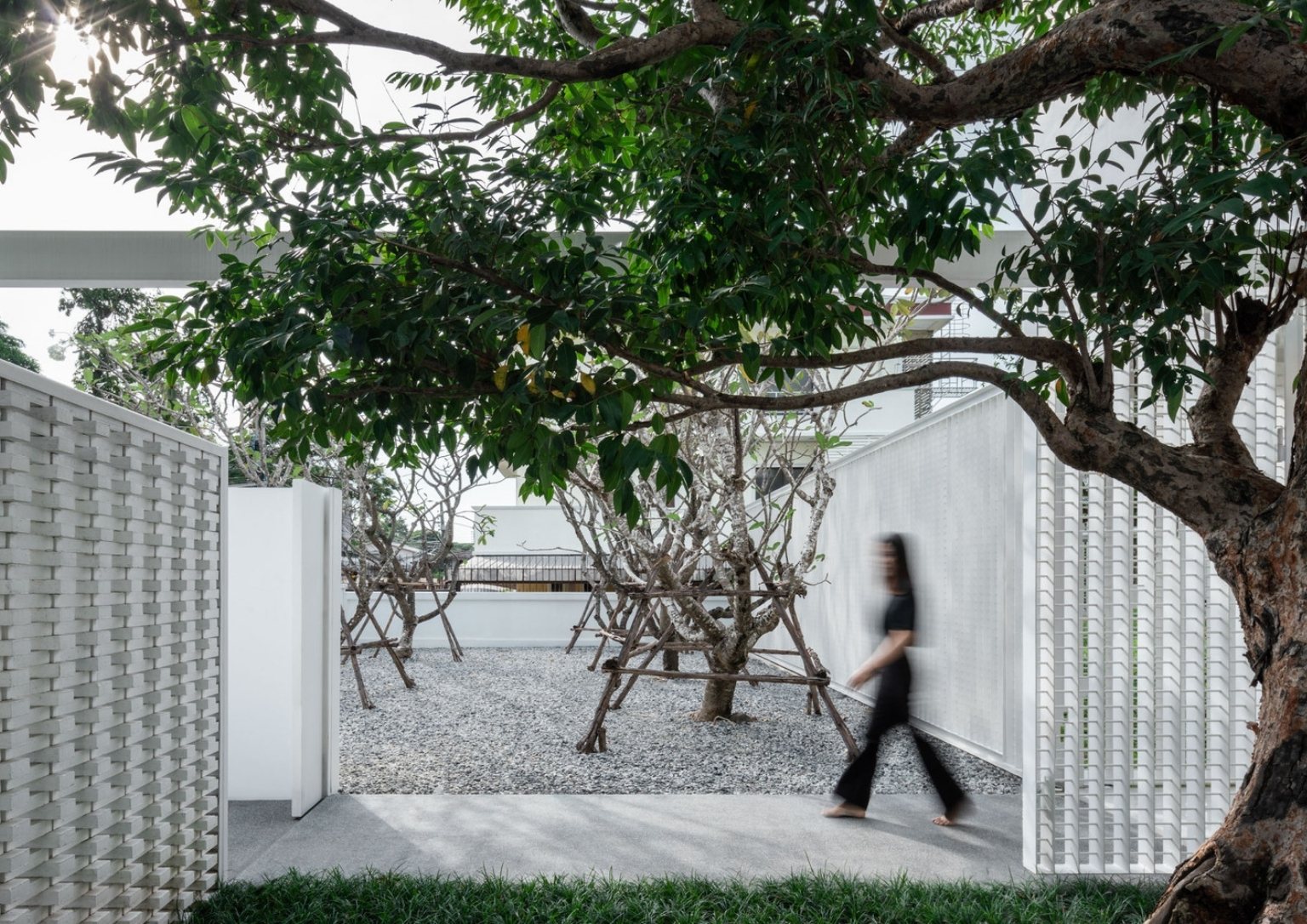
The Semi-Private Gardens, meanwhile, are veiled in vertical fins restricting views into the living room. The central and largest court is for exclusive eyes only. The family members and those invited are the only ones allowed to experience the space within.

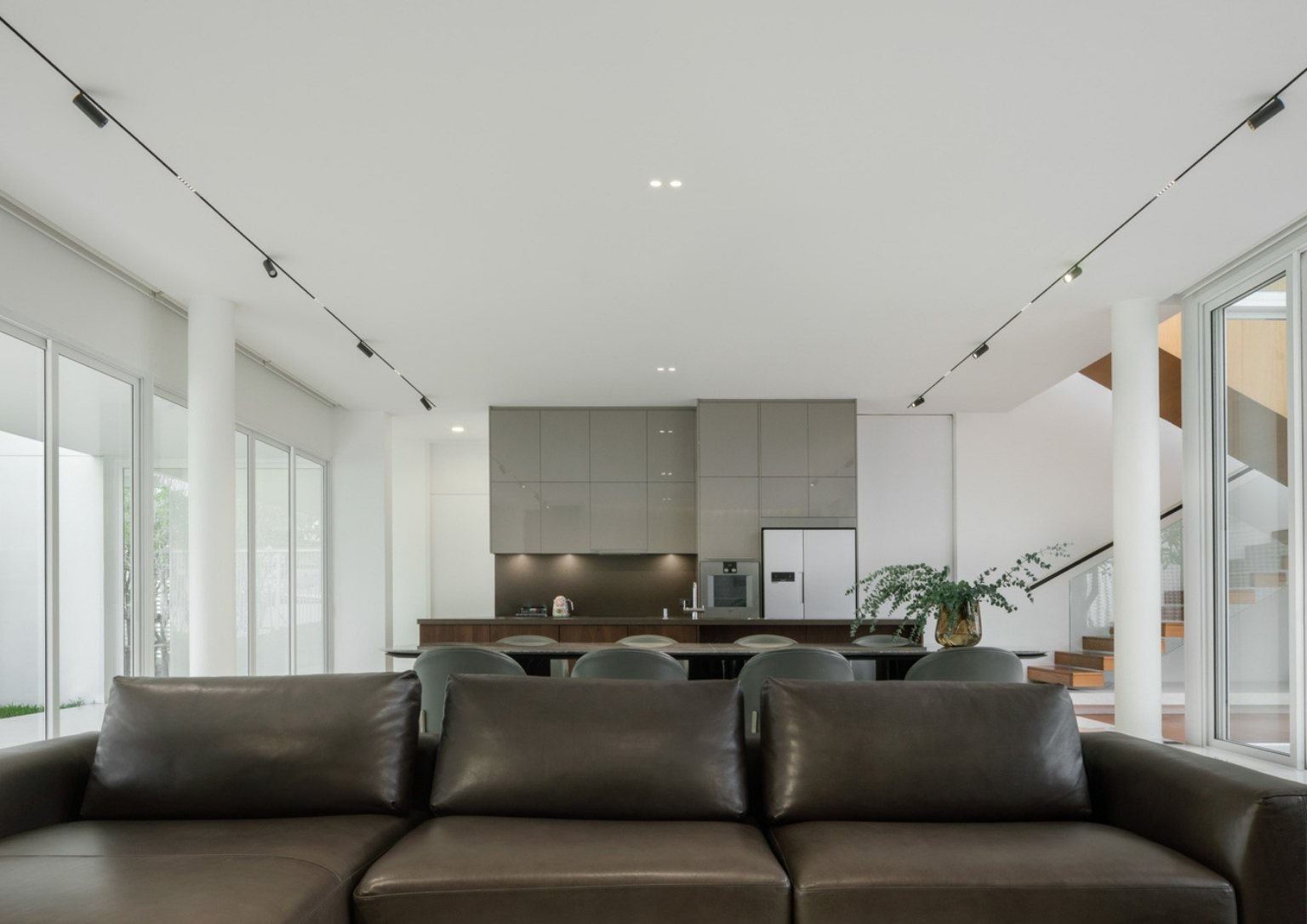
Private Gardens are placed adjacent to the study and living room inside the house. These are strictly restricted to the outside and only for use of the family and their guests at their leisure all day long in complete privacy.
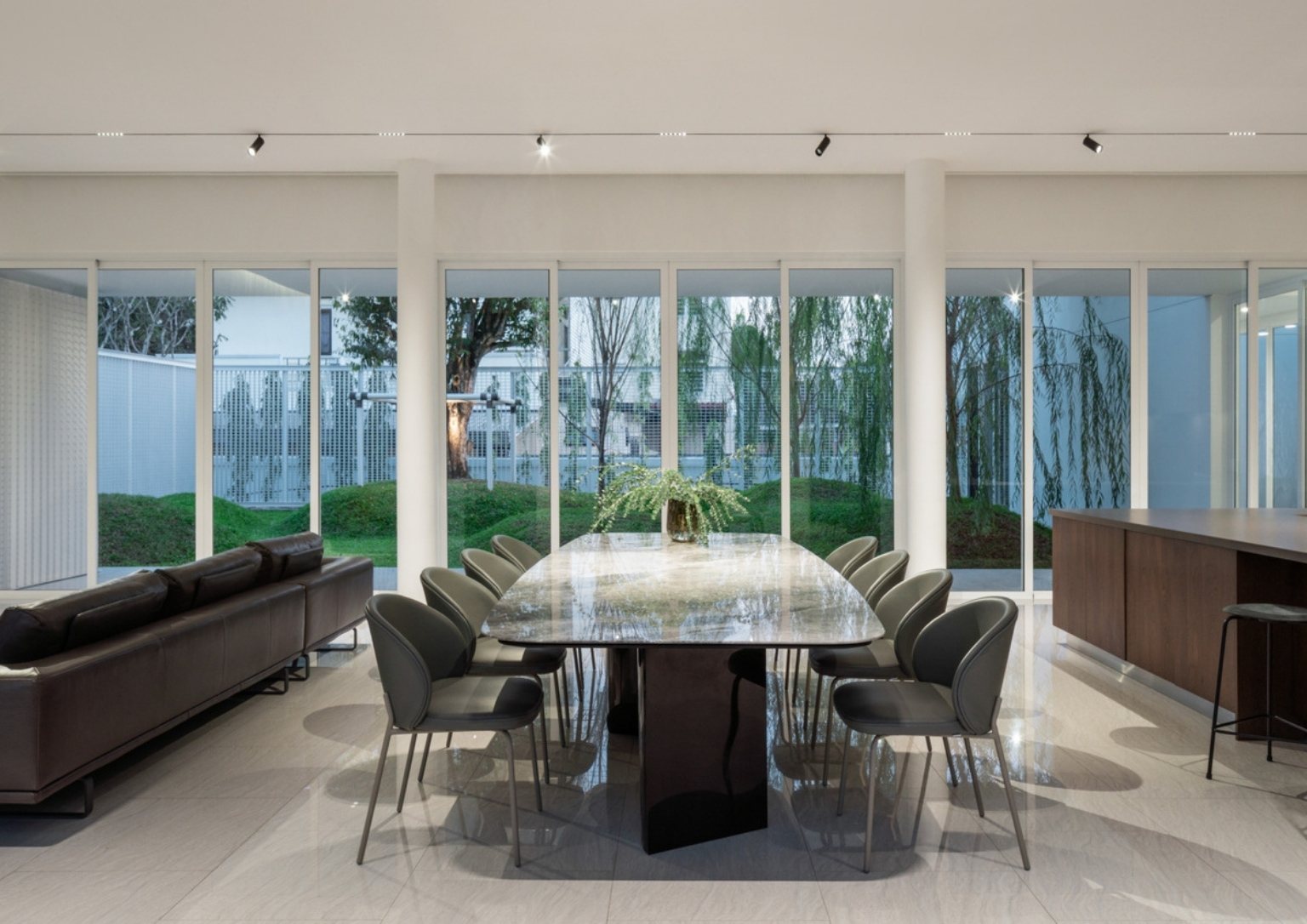
The staircase transitioning from the more public space to the private spaces has its privacy level reflected in the glass balustrade of the first flight and transitions into solid timber walls in the second as it reaches the private upstairs. Upon reaching the top of the stairs reveals the green room exclusive for the snug directly behind. The screen allows the foliage of the tree below to be framed and contained.
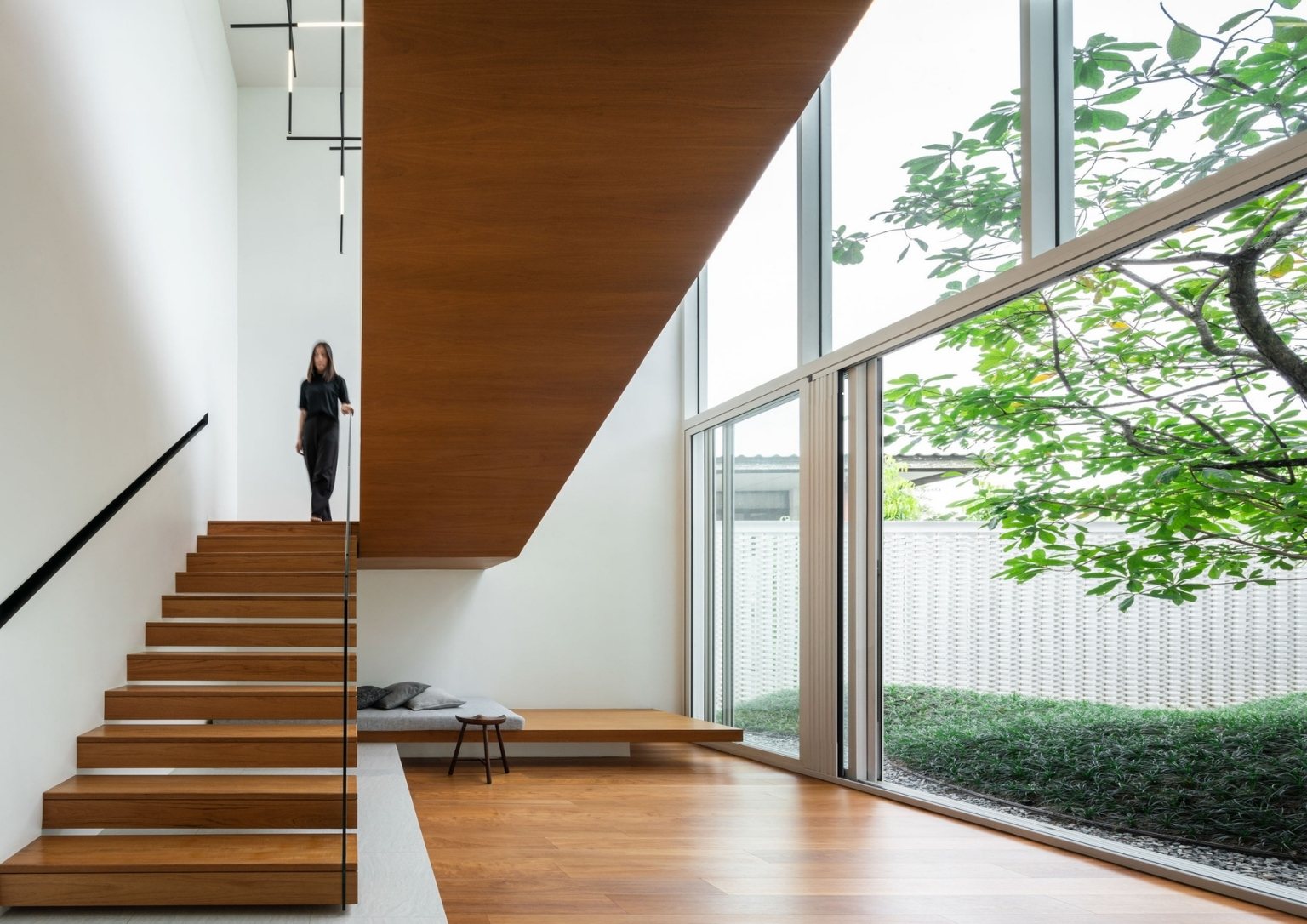
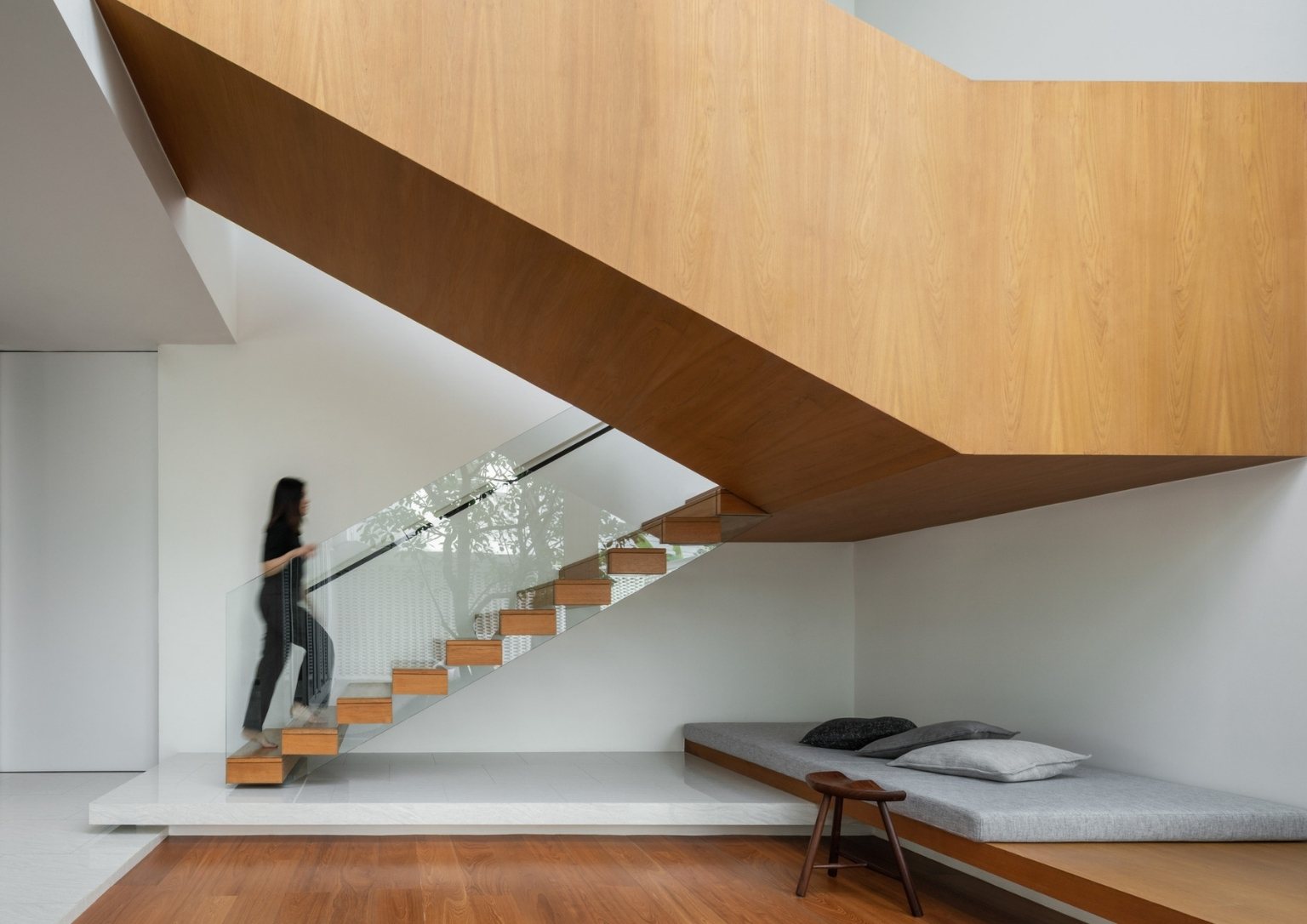
Sky Garden is the final layer of the house and it is the most private. It is only available to the owner. Other members of the family do not have access to this room. The view from the master bedroom is complexly layered resulting in a refined simplified view of lush greenery.
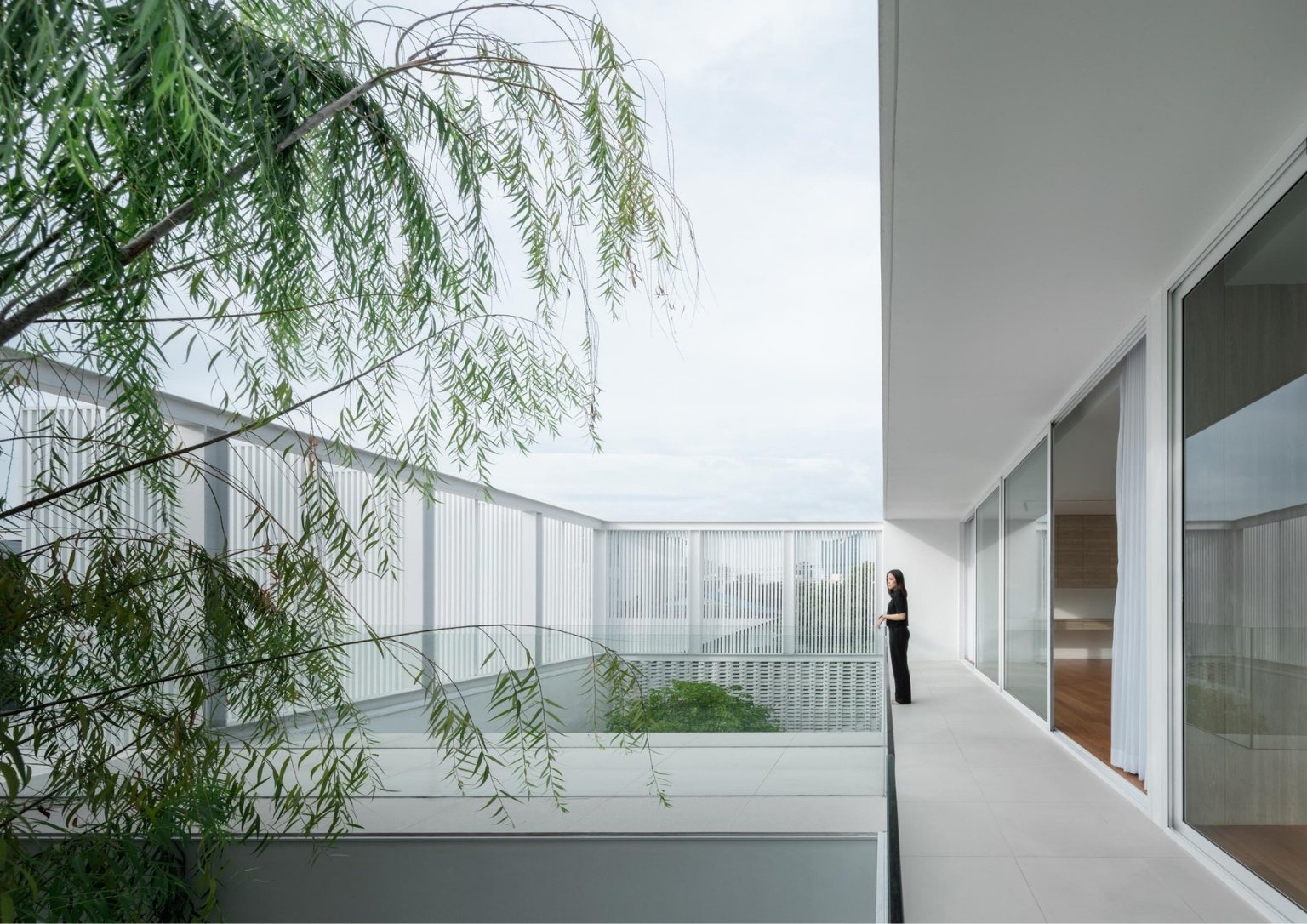
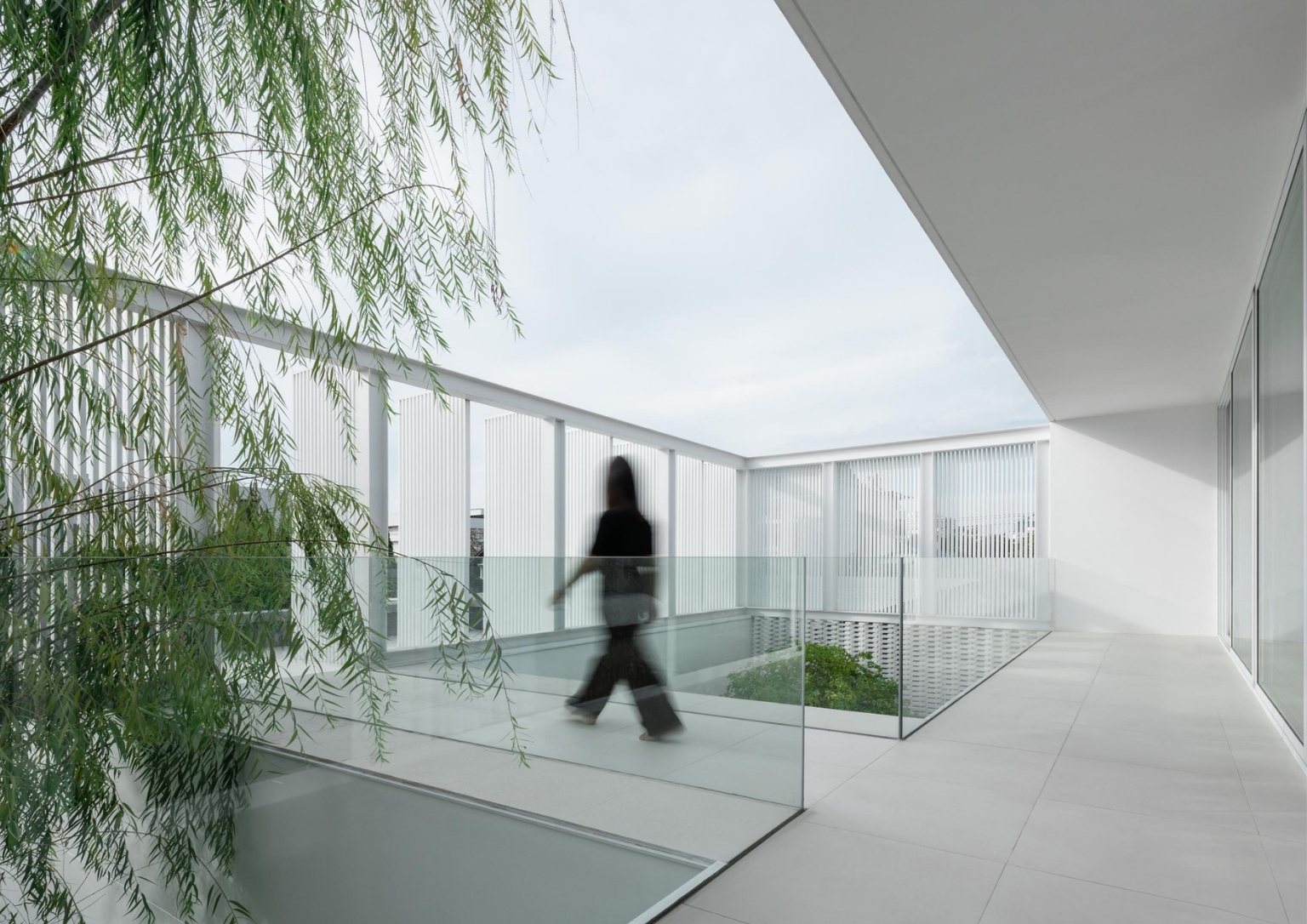
A bridge leading to a lowered terrace is placed in the foreground. On either side are swaying leaves coming from the downstairs court shared with the study and the Weeping Willow forming the midground. Occupants can see the central trees in the distance through the screen. According to the architect, this view is permanent, unwavering, and uncompromising because the screens ensure complete privacy. No blinds are required.

The house appears to be segregated if looked at from the road and the neighboring windows. Green pockets fragmented into levels of privacy, admitting views and access based on their relationship with the owner. When viewed from the inside, however, the occupants of the house can enjoy continuous, uninterrupted views.
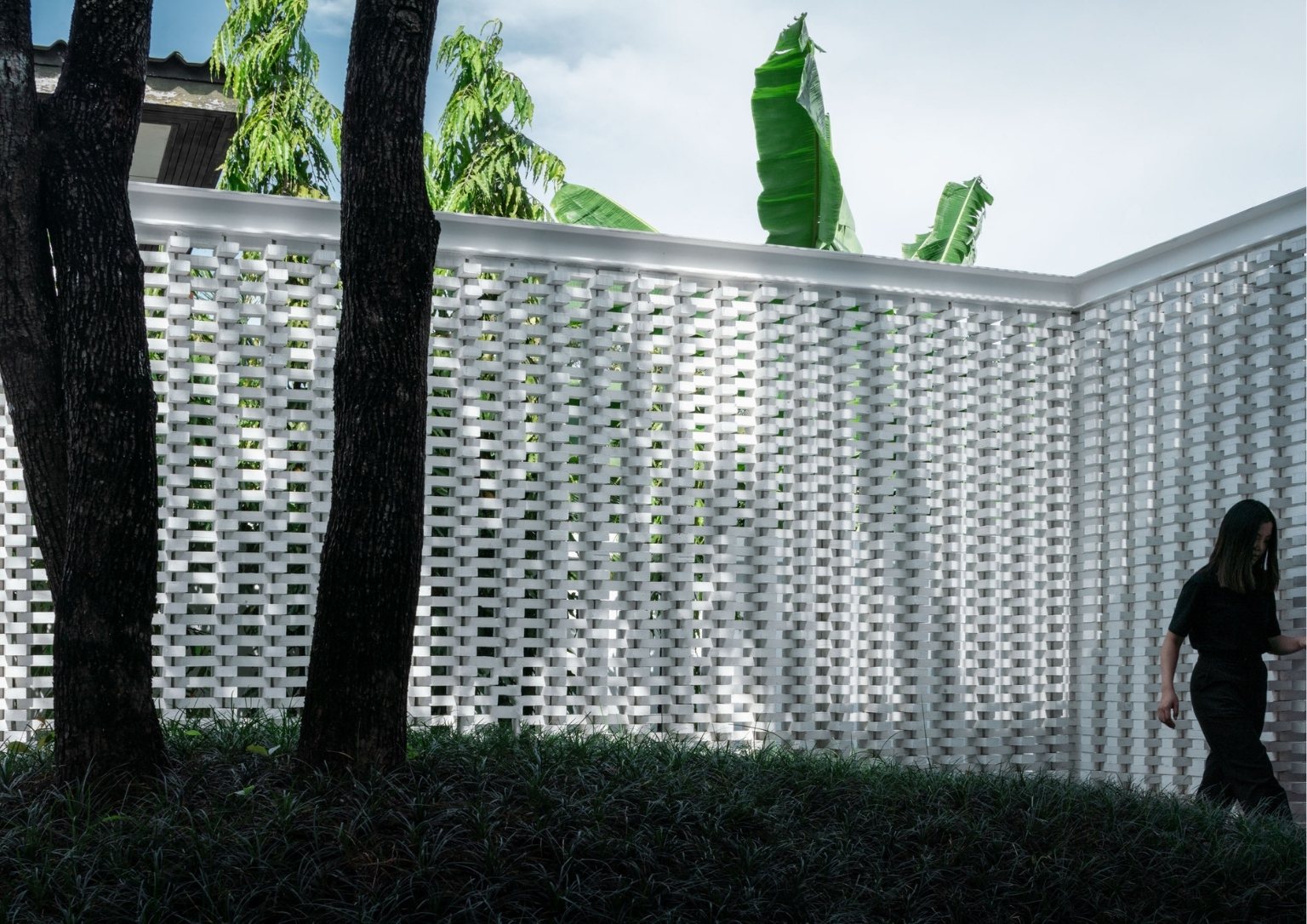
Ayutt and Associates Design emphasizes that the house is designed as a part of the neighborhood, interacting with what surrounds it. “The layers of screens and façade of Veil house exist not to completely cut the inhabitants off from their surroundings, but in fact, the permeability of these boundaries allows dialogues to take place between what is private and public while maintaining absolute privacy where required,” the architect adds.
Photos by Chalermwat Wongchompoo
